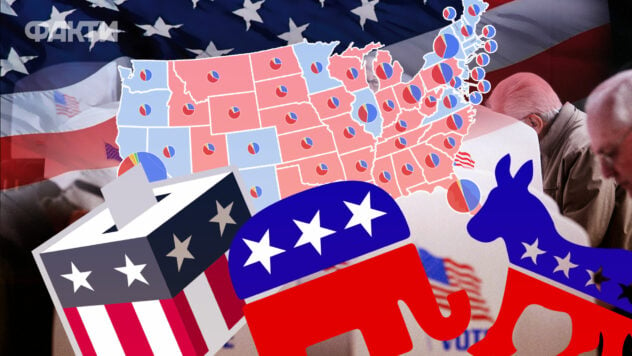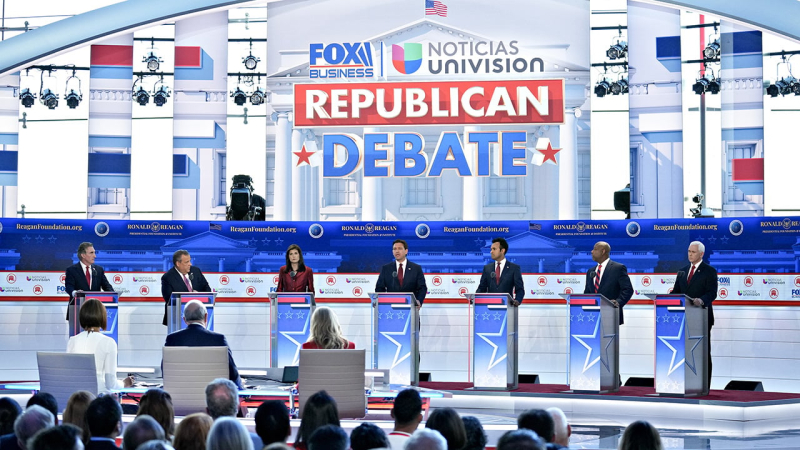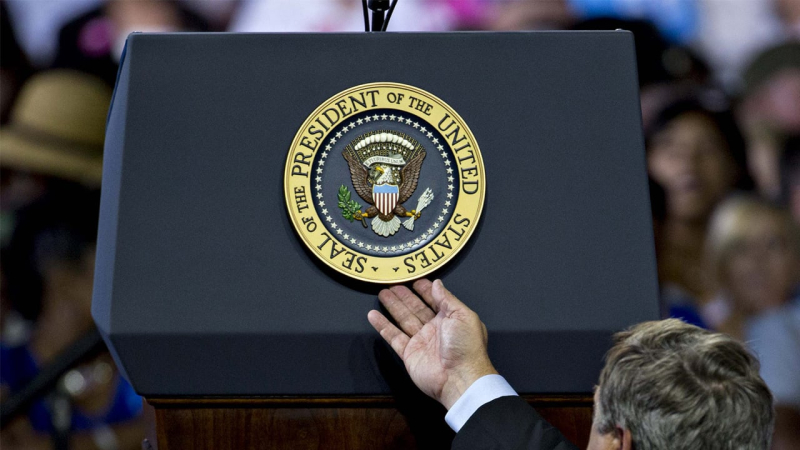
The US presidential election process is different and can seem long and confusing for European democracies.
The election process in the United States takes several months, and usually two candidates from the Republican and Democratic parties make it to the finals. The future president occupies the Oval Office in the White House for four years with the right to be re-elected for another term, but no more than two terms for one politician.
The immediate final of the future presidential elections in the United States will take place on November 5, 2024.
Now watching
ICTV Facts looked into how the US presidential elections function, how they differ from the primaries, and what the process of nominating candidates is.
How elections take place in the USA
When there is one year left before the US elections, candidates from the two main political parties – Democrats and Republicans – begin their election campaigns. This part of the campaign involves creating their team and holding rallies to seek support and raise funds for their campaigns.
It often happens that under conditions when the current US president from one of the two parties has served only one term in office and plans to run for another four-year term, then his party may not nominate other candidates, but adhere to the policies of the current head of the White House.
This, for example, happened in the 2020 elections, when Republican Donald Trump was the only candidate from the party, since he held the office of US President. Then candidates were nominated only by the Democratic Party.
A similar thing happened in 2024, when the current US President, Democrat Joe Biden, ran for a second term. He subsequently withdrew his candidacy, and incumbent Vice President Kamala Harris will compete against Trump in the November 5 presidential election.
Debates within the party
At the start of the election campaign, Democratic and Republican candidates participate in televised debates. During the debates, each candidate answers tough questions about how they plan to implement their policies if they win. They also get a chance to defend their positions on issues and policies against other candidates.
It is noteworthy that a US presidential candidate can refuse to participate in debates, as Republican Donald Trump did in his 2024 election campaign, not attending a single intra-party debate with other Republicans.

Photo: Getty Images
Election Begins: Primaries and Caucus
The main stages of voting are the primaries and caucus, which help select delegates who will represent the American people at upcoming conventions. These are two ways people help states and political parties choose presidential candidates.
State and local governments determine the dates of primaries or caucuses. These dates, as well as the time between the primary and general elections, have a significant impact on how early candidates begin their campaigns and how and when they spend their campaign money.
In the lead-up to the presidential election, victories in primaries held early in the year, such as New Hampshire, can influence the outcome of primaries in other states.
Caucus
A caucus is the stage at which party members select the best candidate through discussion and voting. It is a meeting of local members of a political party to select delegates to the national party convention. A caucus is considered to be a substitute for a primary election.
A delegate is someone who will be authorized to represent others as an elected representative at a political party conference.
Primaries
During a primary (or preliminary election), party members vote for the best candidate to represent them in the general election. In most states, primaries are held six to nine months before the presidential election. Primary voters select their preferred candidate anonymously by casting secret ballots.
The focus is on the results of the states of Iowa, New Hampshire, Nevada, and South Carolina. The results in these regions usually determine who will be the final presidential nominee of each party, as these are where the most undecided voters are.
In addition, during the primaries, there is such a thing as Super Tuesday. Super Tuesday is the Tuesday in early February or March of a U.S. presidential election year when the vast majority of states hold primaries. This year, Super Tuesday fell on March 5.
National Conventions
To become the presidential nominee, a politician from the Democratic or Republican Party must win a majority of delegates among his or her fellow party members. Each party then holds a national convention to select a final presidential candidate.
At this point, the delegates elected during the primaries and caucuses “endorse” their favorite candidates. In simple terms, the delegates from the states go to the national convention to vote for their politicians. The final presidential candidate from each party is officially announced after the conventions are over.
If no politician has received a majority of the party's delegates during the primaries and caucuses, the politician from the party is elected by the representatives at the convention. This is done through additional rounds of voting.
Traditionally, it is at the national conventions that the presidential candidate selects his running mate.
In general, presidential candidates campaign across the country to gain support from the general public.
Presidential General Election
In addition to the primary stage, there is also a popular vote, which is closer to the understanding of European democracies. Thus, in the general election, residents of all US states vote for one president and vice president. The names of the candidates are included on the general election ballot.
Notably, candidates from minor political parties and independent candidates may not hold a national convention. But they can be included on the ballot in each individual state if they meet the eligibility requirements.
The elections themselves take place on the first Tuesday in November, but the process does not end there.
When people cast their votes, they are actually voting for a group of people known as electors. Each candidate running for president in his or her state has his or her own slate of electors. When an American votes for a presidential candidate in a general election, he or she is effectively voting for the electors that candidate prefers.

Photo: Getty Images
Electoral College
Unlike European democracies, the president and vice president are not elected directly by ordinary Americans. Instead, they are chosen by electors through a process called the Electoral College.
The Electoral College Voting Stage — is the process in which electors, or representatives from each state, vote to determine who will be president. Each state gets a certain number of electors, roughly equal to its population.
It is the institution called the Electoral College that ultimately determines the future head of the White House.
Because of this election system, which occurs through intermediaries (electors), there may be situations when both candidates have an equal number of states that supported them, but due to the number of electors, the votes to determine the next president of the United States are different.
Inauguration
As in other countries, after the announcement of the final voting results, the candidate who received the most electoral votes does not immediately become president. To ensure a smooth transition of power from one head of the White House to another, a buffer period of approximately two months is given, during which the outgoing president passes on the necessary information about the situation in the country to the future American leader.
Accordingly, since the elections take place in November, the inauguration of the US president takes place on January 20. Only after this does the winning candidate officially become president.
The inauguration process is traditionally held in front of the Capitol building, where the US Congress is located. It always attracts a lot of attention not only from Americans but also from the entire world, as the newly elected president usually gives a commencement speech about how he sees the future of the United States.
After the actual inauguration, the president holds other ceremonies, including a ball and a ceremonial parade.
It is noteworthy that in situations where the vice president becomes president (for example, after the early end of the term of the head of the White House), he takes the oath of office, but there is no public ceremony.

